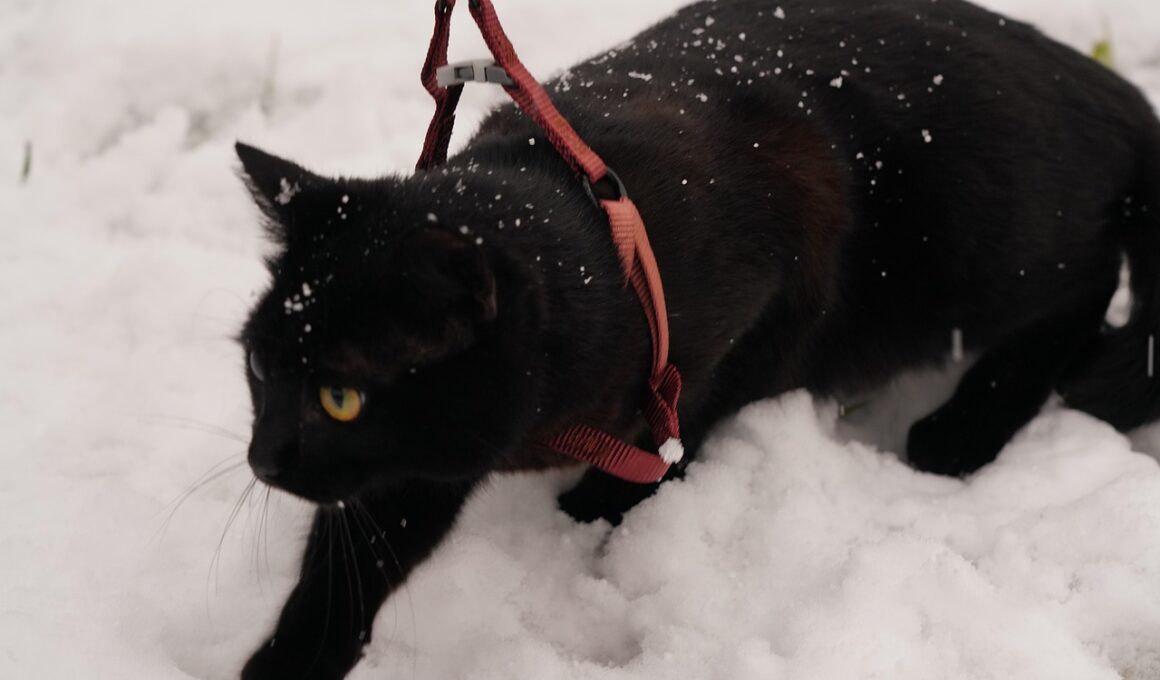Training Techniques: Positive Reinforcement for Leash Training
Training your cat to use a leash can be a rewarding experience, not just for you but for your feline friend as well. This method has gained popularity for its effectiveness and ease of implementation. The key to successful leash training is positive reinforcement, which involves rewarding desirable behavior to encourage its repetition. Start by selecting a comfortable and secure harness specifically designed for cats ensuring it fits well without being too tight or too loose. Allow your cat to get accustomed to the harness indoors, using treats to create associations with it. Gradually introduce the leash by letting your cat explore the space while it wears the harness. Avoid pulling or forcing your cat, as this could lead to anxiety and resistance. Instead, gently guide them and offer positive reinforcement when they show willingness to move forward. Always remain patient, as leash training may take some time. Consistency is essential; practice short sessions daily to maintain their engagement and progress. Each small step forward should be celebrated, promoting a positive and encouraging training environment. Keep the sessions fun, and your cat will likely become an enthusiastic part of your outdoor adventures.
Once your cat is comfortable wearing the harness indoors, the next step is to introduce leash walking. Choose a secure, quiet area for initial training, such as your backyard or a similarly enclosed space. Slowly attach the leash and let your cat wander freely while you hold the other end. Never pull or tug the leash, as it may create fear or reluctance. Instead, call your cat gently to guide them forward, rewarding them with treats and praise whenever they make progress. Keep the leash loose, allowing your cat to explore at their own pace, fostering a sense of security. Avoid overwhelming your pet with too much stimulation and distractions initially; limit the training area until they’re fully comfortable with the leash. Outdoor environments can be filled with potential distractions, which might scare them. Gradually increase the distance while remaining attentive to their mood and responses. A calm and positive environment encourages your cat to engage with the process, making leash training enjoyable rather than stressful. Building this new skill takes patience but can lead to exciting outdoor experiences with your feline companion.
Encouraging Exploration and Engagement
A great way to enhance your cat’s willingness to wear the leash is to incorporate play and exploration into the training sessions. Use appealing toys or treats to entice your cat into moving forward while on the leash. This encourages engagement and helps them associate the leash with fun and pleasurable experiences. Some cats may be hesitant to explore new environments at first; hence, allowing them time to adjust is important. Introducing different textures or surfaces underfoot can boost curiosity and intrigue. Start with a familiar space, then gradually transition to new areas, letting your cat explore at their own comfort level. A slow approach prevents overwhelming your cat with new sights and sounds, allowing them to build confidence in their surroundings. Don’t forget to reward your cat liberally for taking positive steps forward, verbally praising them continuously throughout the training. With positive reinforcement, they will learn that following you leads to enjoyable adventures. Be attentive to their body language, adjusting the environment or pace as needed. This ensures a successful journey towards becoming a well-adjusted leash-walking cat.
Training your cat to walk on a leash can foster a strong bond between you and your pet. The positive reinforcement method not only helps in effective training but also builds trust. As your cat becomes more comfortable, they’ll start to look to you for guidance, making outdoor experiences more enjoyable for both of you. Always listen to your cat; if they appear stressed or uncomfortable during training, take a break and reassess. Short sessions, filled with patience and fun, often yield better results than long, stressful training iterations. Mixing up the environment can also enhance your cat’s adaptability, exposing them to different sights, sounds, and smells. This exposure helps in developing their confidence, leading to a more relaxed cat when outdoors. Regular practice helps solidify the training habits while keeping your cat in great shape physically and mentally. Always remember the importance of a gradual approach, focusing on small achievements rather than expecting immediate perfection. Make adjusting and modifying expectations a part of your routine. This adaptability during training will aid your cat tremendously, guiding them to become a seasoned little explorer on a leash.
Handling Resistance and Setbacks
Not all cats will take to leash training quickly; some resistant cats may require additional patience and thoughtful tactics. If your cat shows signs of refusal or anxiety, it’s essential to adjust your approach. Focus on the positive reinforcement aspect, ensuring they remember the leash as a symbol of fun rather than fear. Offer incentives such as their favorite treats whenever they approach the leash or harness, reinforcing interest and curiosity. It’s also important to understand your cat’s comfort level; some cats might need longer acclimatization periods before they feel ready to venture outside. Observing their reactions will help determine how best to move forward. Break down skills into smaller tasks, celebrating small successes as they come along. If your cat becomes disinterested or frustrated, consider taking a break and revisiting the training later when they are more relaxed. Gradual exposure to the outdoors can help them gain confidence. Recognize that your patience and persistence will pay off, providing opportunities for enriching experiences together. This success will come, making it essential to maintain a positive and flexible mindset as you navigate the training journey.
Building consistent routines can significantly enhance leash training in your cat. Cats thrive on predictability, allowing them to understand what’s expected. A training schedule helps in establishing a habit, making your cat more receptive to learning. Try to schedule training sessions at the same time of day, using the same phrases or cues, reinforcing recognition of behaviors expected during these times. Additionally, keep sessions relatively short so as not to overwhelm your pet; five to ten-minute modules are usually plenty. Incorporate a gradual increase in the complexity of tasks as your cat becomes more comfortable. For example, practice walking a little further each time while ensuring they don’t feel pressured. Celebrate every small victory, whether it’s walking a few steps or wearing the harness for an extended duration. Your enthusiasm is contagious, and your cat will appreciate the positive attention. Moreover, using clicker training can also reinforce the good behaviors—they associate the click with success and rewards. Consequently, they will be more motivated to engage in desired behaviors repeatedly. With time, dedication, and love, both you and your cat can enjoy countless adventures on walks.
Safety Precautions During Leash Training
Safety is paramount when training your cat to walk on a leash. Always ensure your cat is wearing a comfortable and secure harness designed specifically for feline anatomy. Never use collars for leash training, as they can cause neck injuries during pulling. Regularly check the harness for wear and adjustments to ensure it remains secure, especially as your cat grows or gains weight. During excursions, stay alert to potential hazards in the environment, from sudden loud noises to unfamiliar animals. Avoid busy or crowded areas until your cat feels confident with the leash. Maintain a safe distance from potential dangers, ensuring your cat feels secure and relaxed throughout the experience. Carry a mobile phone and make sure your cat’s identification tags are current and easy to read. In case of an emergency, having this information at hand can be crucial. Securing your cat before opening doors or gates will prevent escape or accidents. Overall, successfully training your cat requires patience, commitment, and attention to detail. With the right approach, you’ll create safe and exciting outdoor adventures for both you and your furry companion.
Ultimately, leash training your cat forms an invaluable bond between you and your feline friend. Through positive reinforcement, patience, and incremental goals, you equip your cat to enjoy the great outdoors safely. This process not only increases their physical activity but also encourages mental stimulation and exploration. Regular walks can improve their confidence levels, enabling them to overcome many environmental challenges with ease. Continuously fostering their curiosity will create a well-balanced and happy cat. The journey may not always be smooth, but recognizing small victories and remaining understanding when faced with setbacks turns the experience into a collaborative effort. Your enthusiasm and commitment will inspire your cat to embrace the leash with similar excitement. Be adaptive, listening to their body language and adjusting your approach as needed. Remember that every cat is unique, with their preferences and personality traits influencing their progression in leash training. Celebrate the moments of success while learning together through the challenges. Life is about the journey shared with our beloved pets, and leash training can lead to many memorable and enriching experiences enjoyed side by side.


